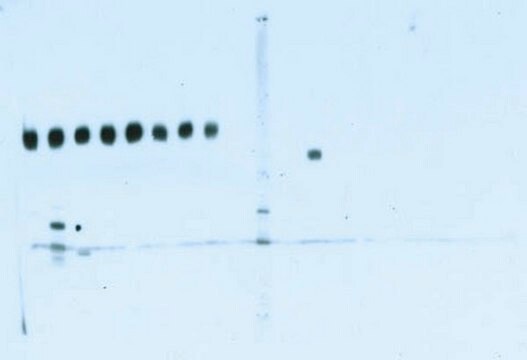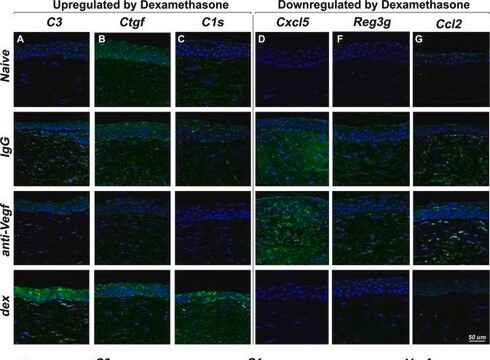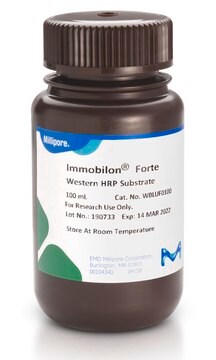2504
ReBlot Plus Strong Antibody Stripping Solution, 10x
Sinonimo/i:
Western blot stripping solution, blot stripping solution
About This Item
Prodotti consigliati
Forma fisica
liquid
Confezionamento
pkg of 50 mL
Produttore/marchio commerciale
Chemicon®
Re-Blot™
tecniche
western blot: suitable
Metodo di rivelazione
chemiluminescent
Condizioni di spedizione
wet ice
Descrizione generale
Stripping and re-probing of Western blots offers several advantages:
1) Conservation of samples that are expensive or available only in limited quantities,
2) Analysis of a given blot using several different antibodies, e.g. subtype- or isoform-specific antibodies,
3) Re-analysis of anomalous results and confirmation with the same or a different antibody,
4) Correcting errors in incubation with the wrong antibody,
5) Cost savings in reagents and time by reusing the same blot.
While antigen and antibody-based immunoaffinity matrices, such as Sepharose™ conjugates, have been reused many times without compromising antigen-antibody reactivity, the need for pH extremes and chaotropic agents has precluded the application of these methods to Western blotting.
The MILLIPORE Re-Blot Plus Western Blot Strong Antibody Stripping Solution contains specially formulated solutions that quickly and effectively remove antibodies from Western blots without significantly affecting the immobilized proteins.
Advantages of the Re-Blot Plus Western Blot Strong Antibody Stripping Solution include:
· No pungent-smelling b-mercaptoethanol is contained in the Antibody Stripping Solution.
· Antibody stripping is done at room temperature. No heating of blots is required.
· Blots can be stripped of antibodies in approximately 15 minutes at room temperature.
· Blots may be reused in 25 minutes.
Applicazioni
The Re-Blot Plus Western Blot Strong Antibody Stripping Solution should be used only for qualitative purposes until it has been established by comparative blot analysis that stripping does not quantitatively affect a given antigen.
This product is for research use only; not for diagnostic or in vivo use.
Componenti
Stoccaggio e stabilità
Note: To prevent reagent degradation secure the cap tightly upon storage. Avoid extended exposure to air.
Note legali
Esclusione di responsabilità
Avvertenze
Danger
Indicazioni di pericolo
Classi di pericolo
Acute Tox. 3 Dermal - Acute Tox. 3 Inhalation - Acute Tox. 4 Oral - Aquatic Chronic 2 - Eye Dam. 1 - Met. Corr. 1 - Skin Corr. 1A
Codice della classe di stoccaggio
6.1B - Non-combustible acute toxic Cat. 1 and 2 / very toxic hazardous materials
Classe di pericolosità dell'acqua (WGK)
WGK 2
Punto d’infiammabilità (°F)
Not applicable
Punto d’infiammabilità (°C)
Not applicable
Certificati d'analisi (COA)
Cerca il Certificati d'analisi (COA) digitando il numero di lotto/batch corrispondente. I numeri di lotto o di batch sono stampati sull'etichetta dei prodotti dopo la parola ‘Lotto’ o ‘Batch’.
Possiedi già questo prodotto?
I documenti relativi ai prodotti acquistati recentemente sono disponibili nell’Archivio dei documenti.
I clienti hanno visto anche
Il team dei nostri ricercatori vanta grande esperienza in tutte le aree della ricerca quali Life Science, scienza dei materiali, sintesi chimica, cromatografia, discipline analitiche, ecc..
Contatta l'Assistenza Tecnica.



















